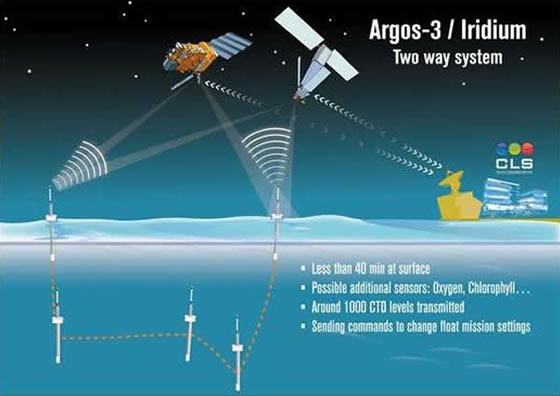Transmission system
The primary goal when improving the transmission system is to reduce the length of time floats are at the surface without having to compromise the data resolution, cost or quality of the transmission.
The majority of core mission Argo floats communicate with the Argos1 and Argos2 satellite systems. This system allows one-way communication with the float. Profile and technical data sent by the float at the surface can be received over a period of ~8 hours.
Iridium, Argos3 and Argos4

Schematic of Argos iridium transmission system
The latest transmission system sees floats equipped with new, smaller and lighter antennas communicating with the Iridium Satellite and Argos-3 systems without greatly affecting the cost of transmission.
The benefits of these new transmission systems are:
- Increased data transfer rates allow floats to transmit high resolution profile data in a matter of minutes, compared with hours on earlier transmission systems, reducing the length of time that floats must be at the surface.
- Two way communication between the satellite and float mean that, for the first time, float mission parameters, such as park and profile cycle period, can be remotely modified. This means that sampling frequency can be adjusted to observe short-lived phenomena such as bloom events.
- Reducing the time that floats must surface for reduces the risk of collision with shipping and theft through piracy, as well as reducing energy consumption and thus increasing float lifespan.